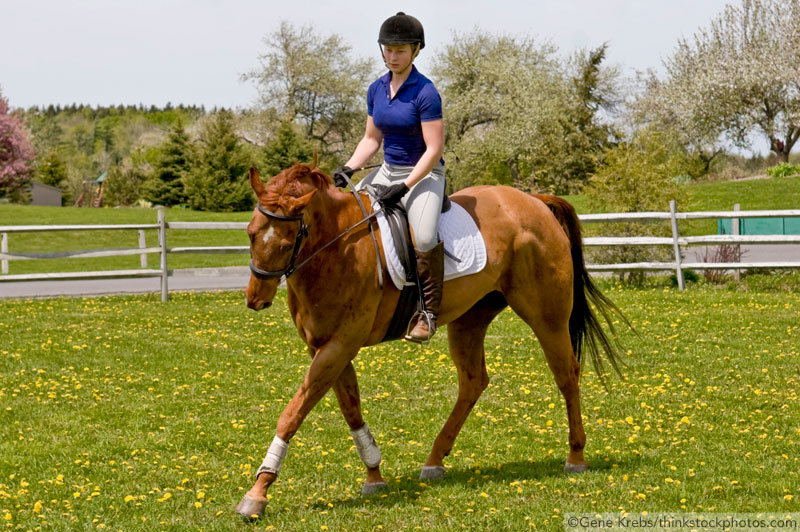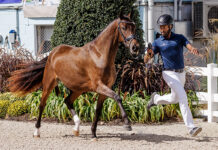
Many of us are emerging from wooly layers in to an active riding season aboard horses that have stood through varying levels of dormancy the past months. A little prudence during this phase goes far. Not only will you avoid injuring or souring your horse, but by following my tips below, you will most effectively bring his body back in to full condition.
- Do not jump back in in to full-intensity work. Studies show that horses exercising less than three days per week lose the majority of previous fitness levels after five to eight weeks. Most riders assume fitness returns quickly once training is resumed full-time, but this is not the case. Much depends on the rate of re-introduction, individual metabolic adaptability, age, and other factors. When you resume spring training, your sessions should be no longer than 25 minutes each for the first ten days.These sessions should involve exercise at a low heart rate (brisk walking with mellow trot segments interspersed). In the second and third week, keep two sessions per week at 25 minutes and increase the remaining sessions to 35 minutes. In week four, one of your sessions can be 45 minutes to one hour; all others should remain shorter. Be sure that at least one-third of your workout is still done at a walk.
- After week 4, increase the effort of the workouts. Difficulty can be increased by duration OR intensity of routines. Do not increase both. It is advisable to first increase duration of exercises, allow two weeks for adaptation, and then increase intensity. A useful weekly conditioning routine at this stage is a cardio interval workout: canter for 30-60 seconds, then slow trot for 60 seconds to recover. Repeat that sequence eight times.
- Prioritize calisthenics. A horse’s underlying muscle system, responsible for stabilizing his skeleton, loses significant tone during time off. Unless specifically addressed, this weakness will impair performance despite other conditioning efforts. Most riding workouts do not target this muscle system. It is necessary to include un-mounted routines like belly lifts, backing up hills, walking slowly over cavalletti poles, carrot stretches. Other suggestions can be found in my book Equine Fitness.
- Once you resume your spring riding and training, commit to at least four days per week of consistent exercise. Physiology studies show that muscle fibers and metabolic functions need to be recruited at least this frequently to make gains.
- Focus on general cardiovascular and calisthenics training for 6-8 weeks before focusing on specificity training for your particular discipline.
- Aim for a lean horse. If your horse is carrying excess weight this spring, trim his food rations. A lean horse suffers much less pounding and strain on his joints. Familiarize yourself with the body condition scoring guidelines; strive for a score of 5-6 as you ramp up your spring training.
Liked this article? Here are others on conditioning your horse:
Start Your Horse’s Spring Training
Video: Riding in Different Frames
Jec Aristotle Ballou is the author of 101 Dressage Exercises for Horse & Rider.







good info
This would also help the rider.
The best method is not to stop for the winter.